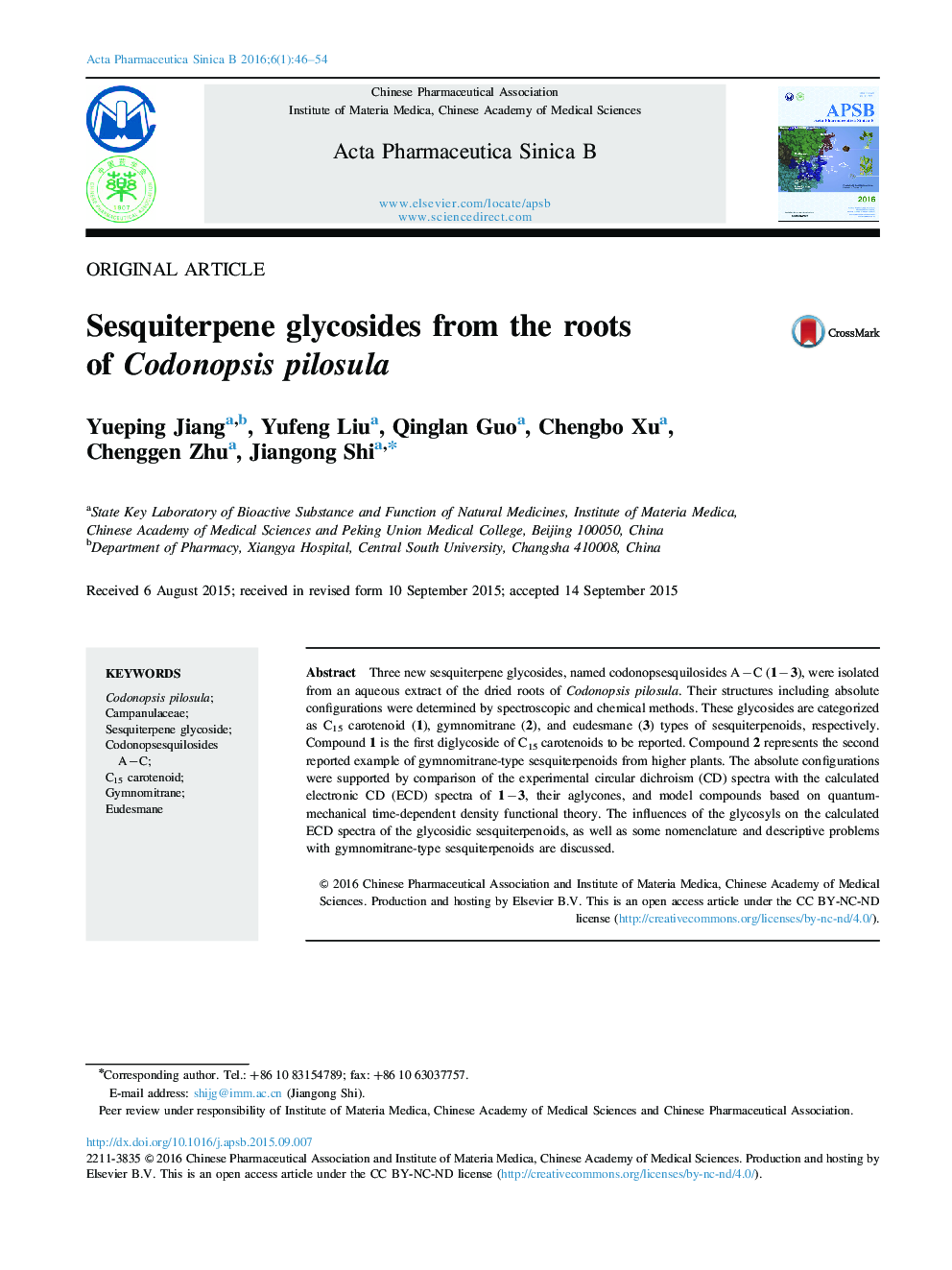| Article ID | Journal | Published Year | Pages | File Type |
|---|---|---|---|---|
| 2474577 | Acta Pharmaceutica Sinica B | 2016 | 9 Pages |
Three new sesquiterpene glycosides, named codonopsesquilosides A−C (1−3), were isolated from an aqueous extract of the dried roots of Codonopsis pilosula. Their structures including absolute configurations were determined by spectroscopic and chemical methods. These glycosides are categorized as C15 carotenoid (1), gymnomitrane (2), and eudesmane (3) types of sesquiterpenoids, respectively. Compound 1 is the first diglycoside of C15 carotenoids to be reported. Compound 2 represents the second reported example of gymnomitrane-type sesquiterpenoids from higher plants. The absolute configurations were supported by comparison of the experimental circular dichroism (CD) spectra with the calculated electronic CD (ECD) spectra of 1−3, their aglycones, and model compounds based on quantum-mechanical time-dependent density functional theory. The influences of the glycosyls on the calculated ECD spectra of the glycosidic sesquiterpenoids, as well as some nomenclature and descriptive problems with gymnomitrane-type sesquiterpenoids are discussed.
Graphical abstractThree new sesquiterpene glycoside codonopsesquilosides A−C (1−3) were isolated from an aqueous extract of the Codonopsis pilosula roots. Their structures including absolute configurations were determined by spectroscopic and chemical methods. Compound 1 is the first diglycoside of C15 carotenoids, and 2 represents the second example of gymnomitrane-type sesquiterpenoids from higher plants. The influences of the glycosyls on the calculated ECD spectra of the glycosidic sesquiterpenoids are discussed. Some suggestions to solve problems with gymnomitrane-type sesquiterpenoids nomenclature and descriptions are proposed.Figure optionsDownload full-size imageDownload as PowerPoint slide
